Arrive in Tokyo, where you will be welcomed by our airport representative who will also assist you with boarding the right private car to your hotel.
The rest of the day is at your leisure.
Overnight in Tokyo
Distances and journey time:
Narita International Airport (NRT) to Tokyo City: approx. 1hr 30mins



This morning your guide will meet you at your hotel and take you to Hamarikyu, a Japanese garden that once served as a private villa of a powerful feudal lord during the Edo period. Its wide collection of seasonal flowers makes it one of the most visited gardens in Tokyo but what makes it more attractive is a teahouse called Nakajima-no-Chaya.
Have a break in the teahouse and a cup of freshly made green tea while your guide shares interesting facts about chado (tea ceremony).
From the park, take the scenic river cruise to Asakusa, a part of Tokyo’s shitamachi or old town. Asakusa is the city’s oldest Geisha district and also home to Senso-ji, Tokyo’s oldest Buddhist temple. The streets around Senso-ji feature many traditional shops and are a delight to wander through.
Next comes Akihabara, an area in Tokyo made famous by its hundreds of electronics shops, and more recently as the center for Tokyo’s anime, manga, video game, and figurine culture.
Located in the heart of Tokyo, Ginza is the main spot for luxury shopping and fashion in the city. Upscale department stores such as Matsuya and Mitsukoshi are probably among the most famous landmarks of the area.
Overnight in Tokyo



Today’s tour starts with a visit of Roppongi, Tokyo’s self-proclaimed art district and home to some of Japan’s contemporary and innovative galleries and museums and a few modern skyscrapers.
Roppongi Hills Mori Tower is a 238-meter multi-purpose building with signature brand shops, cafes, and museums. It is recommended to go to the observation deck on the 52nd floor to get a stunning view of the metropolis and the nearby Tokyo Tower.
Next comes Meiji Jingu, Tokyo’s most famous shrine dedicated to Emperor Meiji and a popular venue for traditional Shinto weddings.
The shrine is also home to around 120,000 trees, making one forget that just outside its grounds are two of the city’s popular shopping districts, Harajuku and Omotesando.
Final destination is Shibuya, one of the main shopping, dining, and entertainment districts in Tokyo. It is famous for its intersection called ‘The Scramble’, one of the world’s busiest pedestrian lanes, and the statue of Hachiko, the most popular dog in Japan.
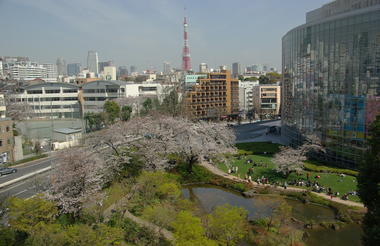


In Tochigi Prefecture, you will discover the UNESCO World Heritage listed Toshogu Shrine complex. Built as a mausoleum for Tokugawa Ieyasu, founder of the Tokugawa Shogunate who ruled Japan for over 250 years, this lavishly decorated shrine complex consists of more than a dozen Shinto and Buddhist buildings located in a beautiful forest setting.
Next stop is Futarasan Jinja. It is located close to the Toshogu shrine in Nikko and was founded in 782 by the monk Shodo Shonin, who brought Buddhism to Nikko. This shrine is dedicated to the deities of the three mountains Mt. Nantai, Mt. Nyoho and Mt. Taro. There are two other Futarasan shrines in Nikko, one located on the summit of Mt. Nantai and one of the shores of Lake Chuzenji.
In the end of afternoon, you will head back to Tokyo with your guide.
Distance and journey time:
Tokyo City to Nikko City: approx. 2hrs

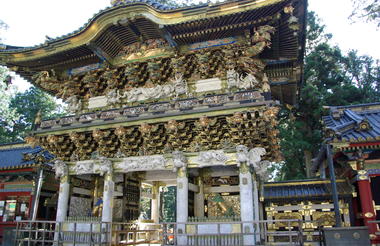

This morning, you will meet your guide at the reception of your hotel, and head to Hakone, the gateway to Mt. Fuji and surrounding national park. This small town is famous for its onsen (natural hot springs), and has natural beauty in abundance.
Armed with your included Hakone Transport Pass, you can take advantage of the numerous forms of transport on offer throughout the Park. You can ride the Guinness World Record-setting ropeway all the way up Mt. Owakudani, passing over sulfurous fumes, hot springs and hot rivers in this volcanic area, where you can eat an egg hard boiled in the sulfuric hot springs which make Hakone famous. If you do, it will add seven years to your life!
A majestic replica pirate ship will sweep you across the Ashinoko, a lake formed by a volcanic eruption 3000 years ago, and the Hakone Tozan ‘switchback train’ zigzags though the mountains, giving amazing views of the surrounding valleys.
Throughout the day you will have the chance to get a glimpse of Mt. Fuji, however please keep in mind that she is a notoriously shy mountain and it needs to be a clear day.
Distance and journey time:
Tokyo station to Odawara station: approx. 35mins



This morning you are met and transferred to the train station on time for your train to Kanazawa.
Journey to Kanazawa, the castle town that thrived as the center for culture and the arts in the 17th century.
Upon your arrival you will walk to the hotel located 100 meters away from the station.
The rest of the day is at leisure.
Distance and journey time:
Tokyo station to Kanazawa station: approx. 3hrs



With your guide explore Kanazawa.
Start with the pristine Kenroku-en Garden, which is ranked as one of Japan’s top three gardens. Here you will find the oldest water fountain in the country, a couple of teahouses, and a large villa that used to be the retirement home of one of the richest clans in Kanazawa.
Adjacent to the garden is Kanazawa Castle, easily accessed through the Ishikawa-mon Gate, a designated Important National Cultural Asset.
Make your way across town to the old Samurai district of Kanazawa and visit Nomura House, a restored residence of a high ranked samurai family. Freshly made green tea can be enjoyed on the second floor while viewing the small Japanese garden below.
At the end of the tour, your guide will drop you off at Ninja Temple.
(Return to your hotel is by your own arrangement)
Note: Visiting Ninja Temple is strictly subject to availability at the moment of booking. And even if we can have the tickets, we can’t ensure the time.
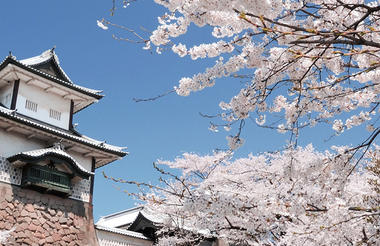


This morning, your guide will meet you at the reception of your hotel, and take you to Shirakawago. Shirakawago, and its neighboring Gokayama region, lines the Shogawa River Valley in the remote mountains that stretch from Gifu all the way to Toyama Prefecture. Both of these prefectures are famous for their traditional gassho-zukuri farmhouses, some of which are more than 250 years old. They were also declared as a UNESCO World Heritage Site in 1995.
Gassho-zukuri means "constructed like hands in prayer," as the farmhouses' steep thatched roofs resemble the hands of Buddhist monks pressed together in prayer. The architectural style developed over many generations, intricately designed to withstand the large amounts of heavy snow that falls in the region during winter. The roofs, which were constructed without nails, provided a large attic space used for cultivating silkworms.
Continue on to Takayama, a small town nestled high in the Hida Alpine region of Gifu Prefecture.
You will experience tonight and tomorrow the quintessence of Japanese life, staying in a real Ryokan in the middle of the Japanese Alps. - Your room has a private onsen and amazing forest views.
Overnight and Japanse dinner at Ryokan
Distances and journey time:
Kanazawa City to Shirakawago Village: approx 1hr 30mins
Shirakawago Village to Takayama City: approx. 1hr



Today’s walk will begin at 9:30. Fall in love with charming Takayama on this guided walking tour. Situated high in the mountains, this once-isolated town has retained its own distinctive cultural traits which are best discovered in the old town.
Along with a local guide, hit the streets of the old town where Alpine architecture and traditional houses can be found at every turn. Learn about the history of the shops, each one having its own link to the city’s history and culture. Browse the different products on offer to learn about the city’s traditions.
A large part of Takayama’s unique heritage is its food. While walking through the town and its market, stop at some of the most popular local shops to sample regional delicacies. Savour items such as miso, a Japanese paste made from soybeans, salt and rice, Takayama rice dumplings and homemade sweets. Learn how these items are made from locally-grown ingredients and using old family recipes. There is also a chance to taste sake produced in one of the town’s breweries.
After this insightful – and tasty – walking tour of Takayama, return to the hotel or continue exploring the town independently.
Time:
Start (guided tour): 09:30
Duration: 2.5 hr
Services included for Food & Culture walk:
- English-speaking tour leader.
- Local food and sake samples (additional food orders will be charged extra and regulated on spot).



Suggested visit:
This morning, you can visit the Miyagawa morning market, where locals come to sell crafts and produce. It's also a good opportunity to try some of the region’s delicious fruit and vegetables.
This afternoon you are met and transferred to the train station on time for your train to Kyoto via Nagoya.
Get ready to go to Kyoto, the reigning cultural capital of Japan, home to 2,000 shrines and temples with 17 UNESCO World Heritage Sites.
Upon your arrival you are met and transferred to your hotel. The rest of the day is at leisure.
Distance and journey time:
Takayama station to Kyoto station: approx. 3hrs 20mins



Today’s tour starts with a visit to Nijo Castle, an ornamental castle that was originally built to serve as the private villa of a powerful feudal lord. The main building was completed in early 1600s and has since then been known for its Momoyama-style architecture, decorated sliding doors, and “chirping nightingale” floors.
Next in the list is the serene Ryoan-ji Temple, which is famous for its well-maintained rock garden and known to be the Myoshinji School of the Rinzai Buddhist sect.
Just a short distance from Ryoan-ji is the stunning golden pavilion collectively known as Kinkaku-ji Temple. The temple grounds is relatively smaller than that of most temples and shrines in Kyoto but what is undoubtedly impressive is the pavilion that is completely covered in handmade gold leaves.
A visit to Kiyomizu-dera Temple follows later in the day. The view from the 13-meter high building is indeed breathtaking and the fact that this veranda was built without using any nails or joiners is quite unbelievable.
The tour ends with a stroll along the busy streets of Higashiyama district, a collection of narrow alleyways lined with local stores, souvenir shops, small eateries, and even pottery centers.
Note: Kiyomizu-dera Temple is currently undergoing partial renovations.

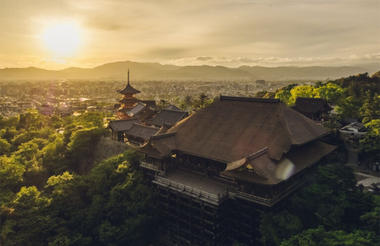

Morning at your leisure.
We recommend to visit the Bamboo forest and walk the beautiful Fushimi Inari Shrine hike.
At 1530, take a closer look at one of Japan’s quintessential arts: tea ceremonies. Meet with a tea master in his private residence for an interactive cultural experience. Hear how the master studied for years to perfect the art of the sado, or tea ceremony.
Before preparing the tea, get an introduction to the history of the ceremony. Learn about its roots and how the rituals practiced in the ceremony are closely related to the beliefs of Zen Buddhism. Then it is time to prepare the tea. Follow the master as he goes through the motions step-by-step, clearly explaining the reasons for each and every movement.
Once the tea is ready, the serving process begins. As with the preparation, the serving of tea is also steeped in meaningful rituals. Before sipping the tea, confectioneries are eaten first, sweetening the tongue to make the matcha tea more mild.
After sipping the healthy brew, bid farewell to the tea master, taking away lasting memories of this incredible glimpse into Japanese culture and tradition.
Time:
Start: 15:30 Duration: 2.5 h
The rest of the day is at leisure.



Day at leisure
Suggested itinerary:
Today, you have the option to go out of town and travel to Nara. For 74 years during the 8th century, Nara was Japan’s capital and many of the temples and shrines built at that time still remain.
Nara is just a small town, with most of its main tourist spots located around Nara Park, where you can encounter quite a great number of tamed deer. You can visit Todaiji Temple, the world’s largest wooden building and home to Japan’s largest Buddha, or Kasuga Taisha, Nara’s most celebrated shrine.
Distance and journey time (approximation):
Kyoto Station to Nara Station: 45 min



This morning you are met and transferred to the train station on time to board your train to Hiroshima.
Hiroshima is famous because of that one particular moment in history - on the 6th of August 1945, it became the first target of an atomic bomb. However, Hiroshima has risen phoenix-like from the ashes, and rebuilt itself as one of Japan's most laid-back, vibrant cities full of wide boulevards, great food, and friendly, welcoming people.
Upon your arrival you will walk to the hotel located in front of the train station.
The rest of the day is at leisure
Overnight in Hiroshima
Distance and journey time:
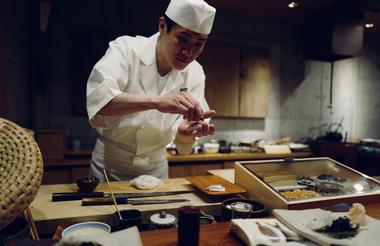
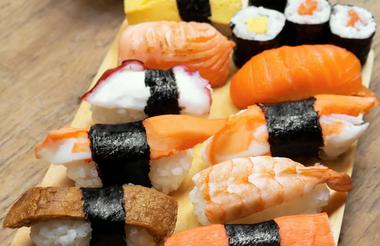

Explore Hiroshima with your local guide.
You will first head to the Hiroshima Peace Memorial Park in central Hiroshima. The area where the park now lies was ground zero right after the bombing. Later on, the Memorial Park was created, which was dedicated to those who lost their lives in the attack.
Stroll through the park and find out the meaning behind the many memorials, monuments, and statues in the park. At the Children’s Peace Monument you will learn to fold an origami crane to place at the statue of Sadoko, a young girl who died from radiation poisoning. She was told that if she could fold 1,000 paper cranes, she would get well. Unfortunately, she was not able to reach that number, thus as a tribute, people from different parts of the world come to this park to make paper cranes and place them at her monument. Walk through the park until you reach the Hiroshima Peace Memorial Museum.
The rest of the day is at leisure.



This morning, your guide will meet you at the reception of your hotel, and take you for a full day tour in Miyajima.
Start with Itsukushima Shrine, declared as one of Japan’s three most beautiful views. The shrine is designed in a pier-like structure and dates back to the 6th century. Its huge vermillion o-torii gate seems to be floating in the water during high tide.
You will also do some hiking on Mt. Misen to see the spectacular views of the surrounding islands.
Overnight in Hiroshima
Distance and journey time:
Hiroshima station to Miyajimaguchi station: approx. 30mins
Miyajimaguchi station to Miyajima: approx. 10mins (by Ferry)

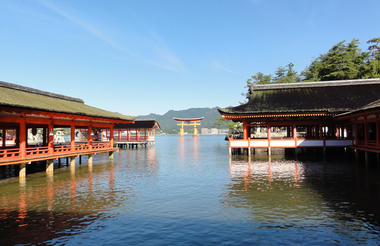

This morning you are met and transferred to the Airport on time for your flight to Tokyo Haneda.
Distance and journey time: Hiroshima City to Hiroshima Airport: approx. 1hr
Haneda Airport (HND) to Narita International Airport (NRT): approx. 1hr 30mins




